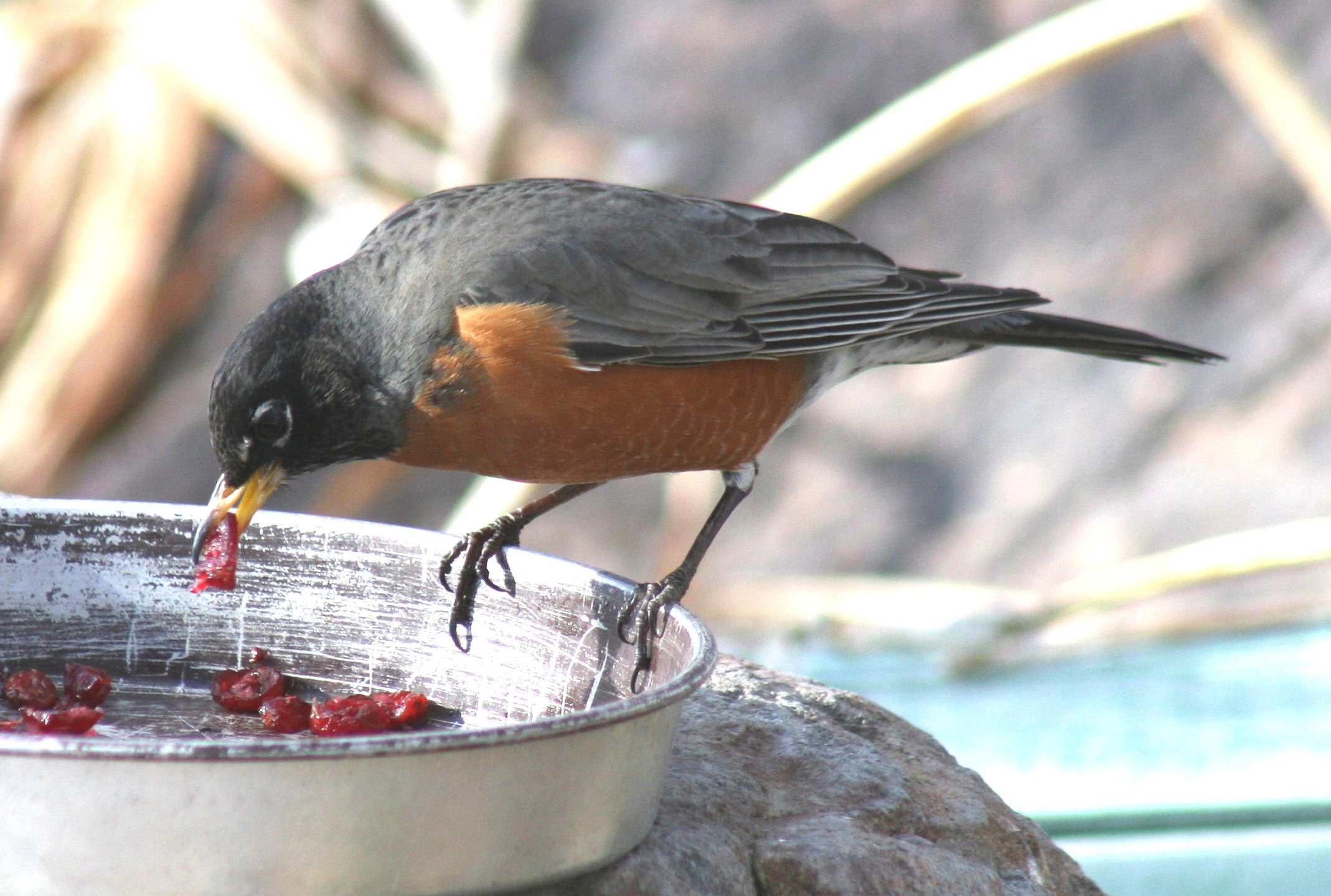Far from an esoteric hobby, bird-watching is as easy as looking out your window.
The increased interest in backyard growing and eating has expanded the knowledge of what our own neighborhoods can provide. While backyard gardening usually requires plugging away at the ground, don’t forget to take some time to look up into the trees where feathered friends can add a new dimension to any garden.
In 2016, the National Survey of Fishing, Hunting, and Wildlife-Associated Recreation reported that out of about 45 million people who consider themselves bird-watchers, 86 percent observed birds around their own homes. About 36 percent took trips specifically to observe wild birds.
But you don’t need $1,000 binoculars and trips to South America to start bird-watching. In fact, one of the best places to see birds could be from a kitchen window or back deck. What you see will depend on the diversity of habitats in your area, but there is an opportunity to see new birds as well as frequent visitors daily.
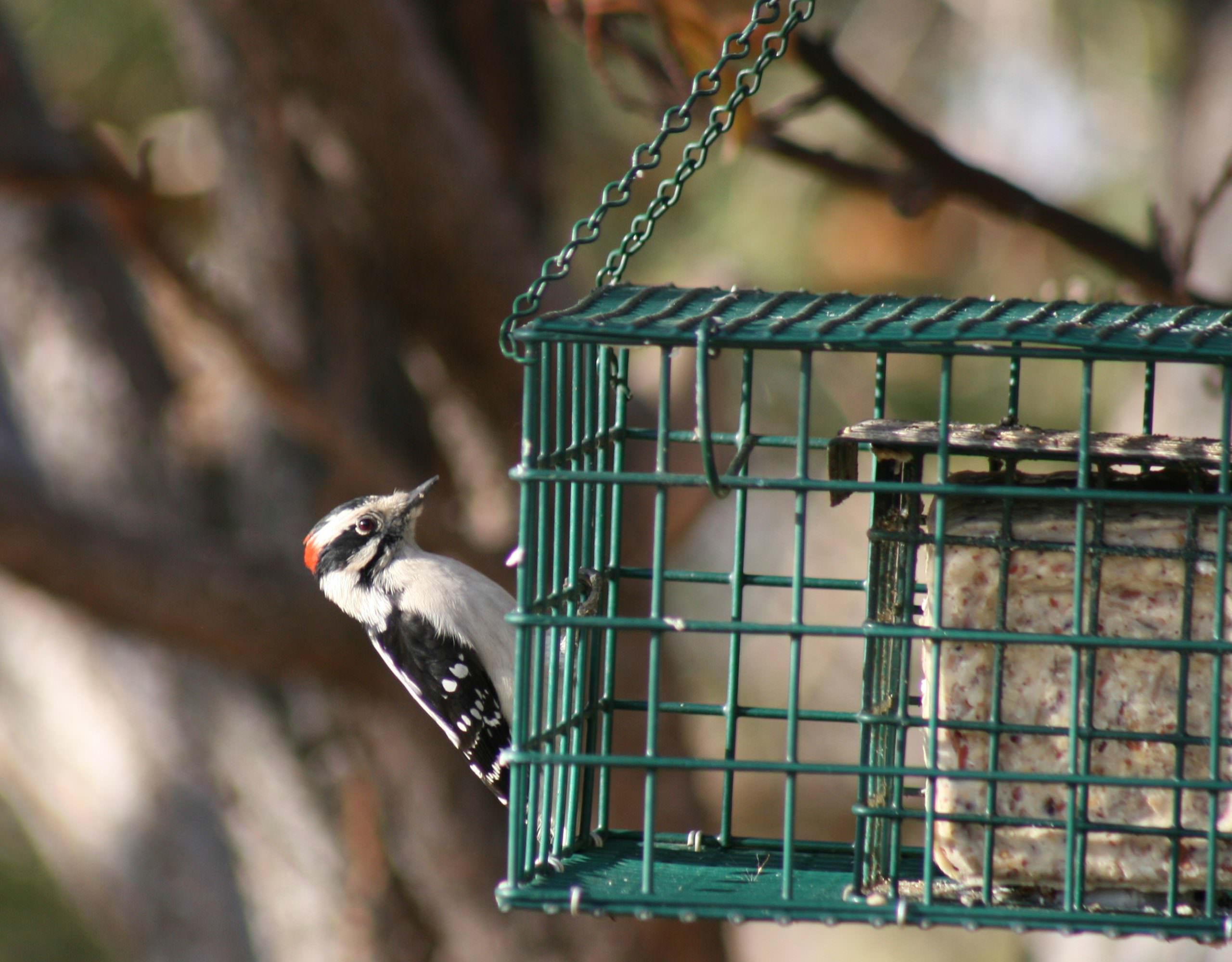
Downy woodpecker on a suet feeder
What’s that bird?
David Jickling, former president of the Lahontan Audubon Society, teaches introductory birding classes at Moana Nursery’s Landscape and Design Center in Reno.
“I bird-watch every day. In fact, I’m doing it right now as I’m doing this interview,” Jickling says. “You don’t need any special equipment, just an interest in birds. However, it takes more than simply being interested in them. Take the time to really look at a bird and what type it is. Look at the differences in colors or beak sizes and stop and really listen to their songs.”
In the fields, marshes, parks, and peaks that surround the Reno-Tahoe area, a plethora of feathered creatures await. Grebes, gulls, and coots splash in lakes; California quail sport handsome head plumes; goldfinches flash their yellow fluff; and blue scrub jays bank like fighter jets. The distinct call of the mountain chickadee sometimes may be winter’s only sound; the mockingbird will mimic a car alarm; and pearly mourning doves wake us up with their sad songs. During harsh northern winters, migratory birds such as golden-crowned sparrows, dark-eyed juncos, and yellow-rumped warblers fly down to join the party.
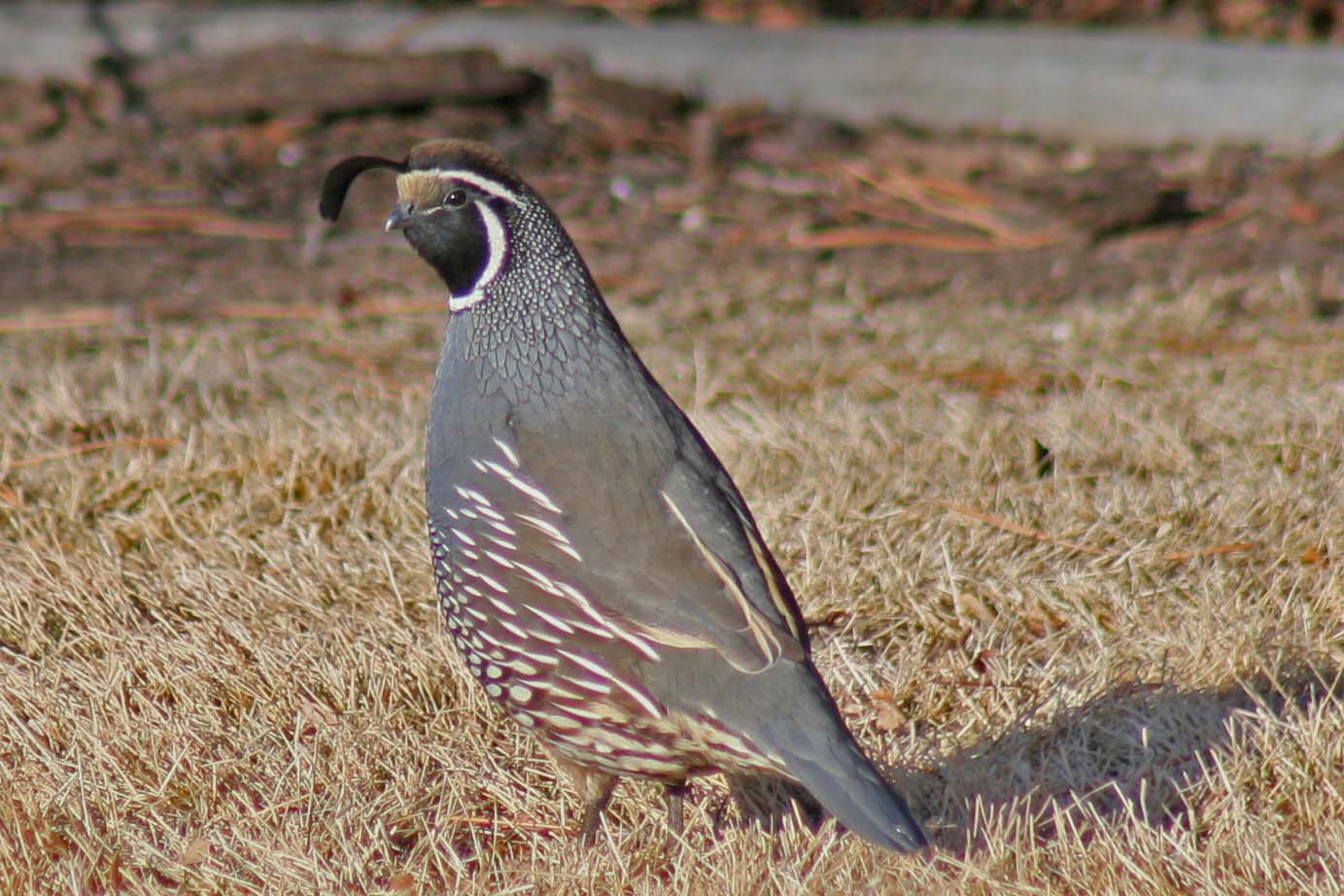
Male California quail
Now, that’s just the little guys. Birds of prey are an important part of any ecosystem, and the Truckee Meadows has a mix of great horned owls, red-tailed and rough-legged hawks, and prairie falcons. Even the nation’s emblem, the bald eagle, will make an appearance.
Like the climate, birds common to specific areas also can change. Jickling says that as environments evolve, birds will expand and contract their ranges to find food and breeding areas. Recently, the great-tailed grackle, with its musical call and defensive stance, has moved up from Southern Nevada.
Recognition and documentation of birds out of their common areas demonstrates the importance of amateur bird-watching. Birders or casual observers can document the birds they see on eBird, the world’s largest birding community. Run by The Cornell Lab of Ornithology, this online resource and app offers a massive bird database as well as tracking lists and personal archiving software.

Male lesser goldfinch on a nyger feeder
Birds of a feather
If you want to expand your own birding range, take a local bird-watching tour.
Jim Woods, an avid birder, has been offering his Birding Under Nevada Skies tours for several years. He also offers his Birding Under the Sierra Skies tours through Sorensen’s Resort in Hope Valley. He treats birdwatching as a joyous yet relaxing way to celebrate Mother Nature.
“Bird-watching doesn’t require much effort; you can go any time you want,” Woods says. “Birds are everywhere and are the most accessible animals in the natural world.”
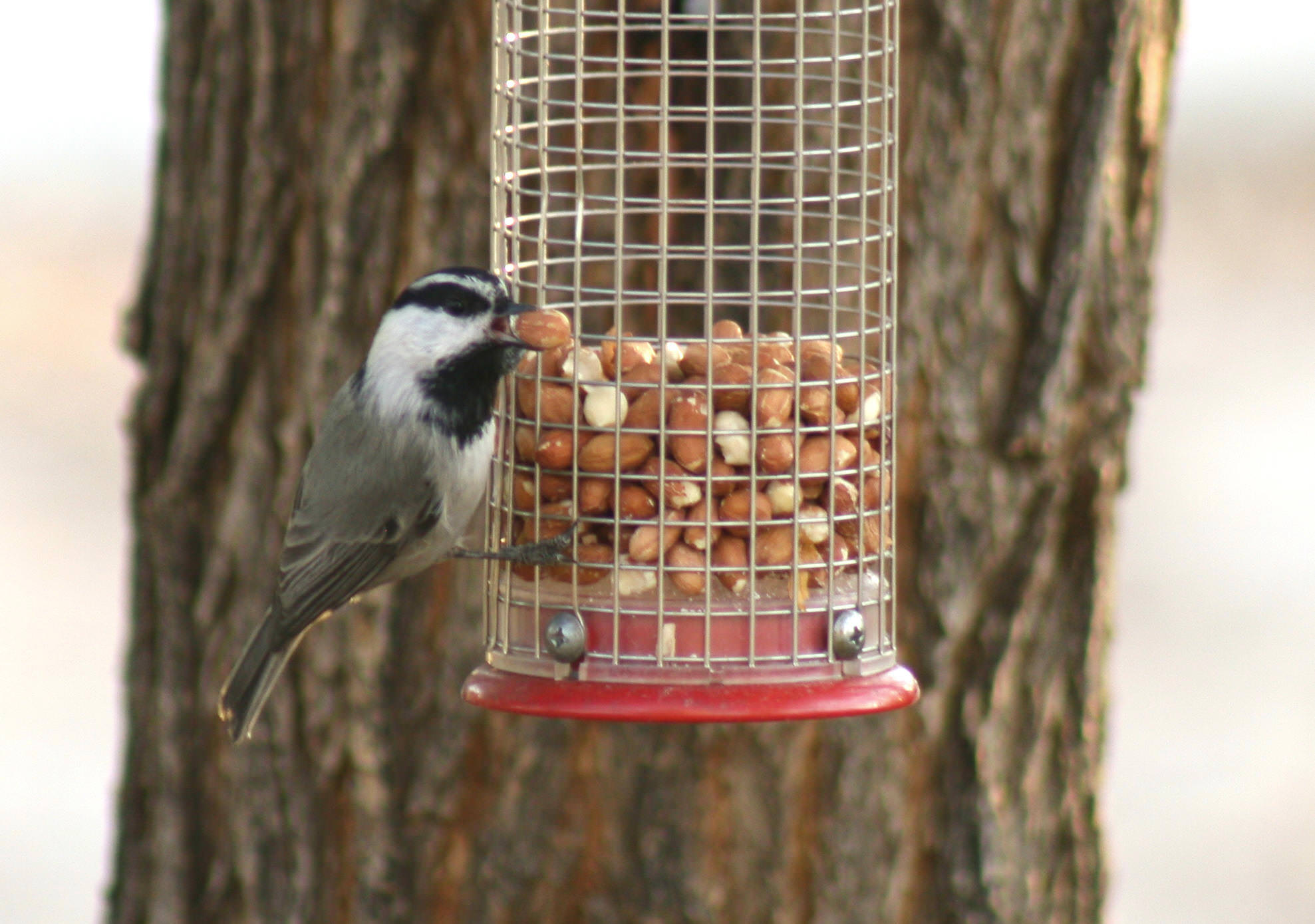
Mountain chickadee on a peanut feeder
Even with his casual demeanor, Woods suggests having a few tools at your disposal, including a good pair of binoculars. He owns a pair of Leica binoculars, but he says you can pick up a decent pair for less than $300. While there are some excellent birding apps such as Merlin or iBird, Woods also recommends a good field guide that contains illustrations rather than photographs. Photos are not as detailed as illustrations and don’t always show what the birds look like during various times of the year; some breeds will have different plumage during the winter.
While Woods encourages new birders to head into the woods, so much can be done to attract birds to any backyard. He waves his arm at the common landscaping found around new construction.
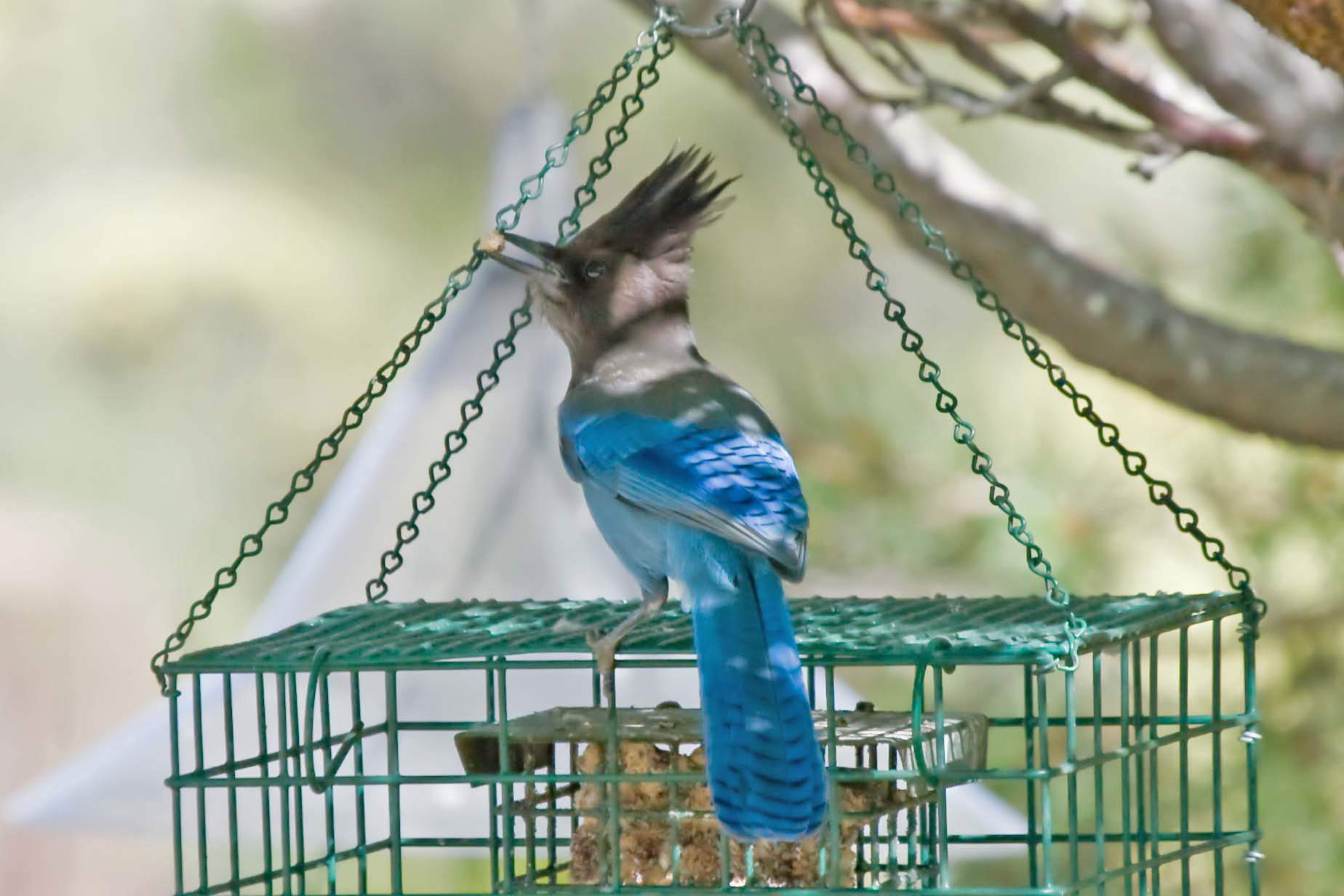
Stellar jay on a suet feeder
“Get rid of this California landscaping and stick with desert or natural landscaping,” he says. “This attracts the local birds. Then the migratory birds see the location as a popular boutique hotel and also check in.”
Woods recommends keeping some areas of your property wild. Don’t trim back fence lines, and let some weeds grow for their seeds. Plant bird-friendly shrubs and trees such as serviceberry, Oregon grape, desert ash, and hawthorn. In the summer, plant sunflowers with large heads that serve as both perch and food. Goldfinches love to chow down on the petals.
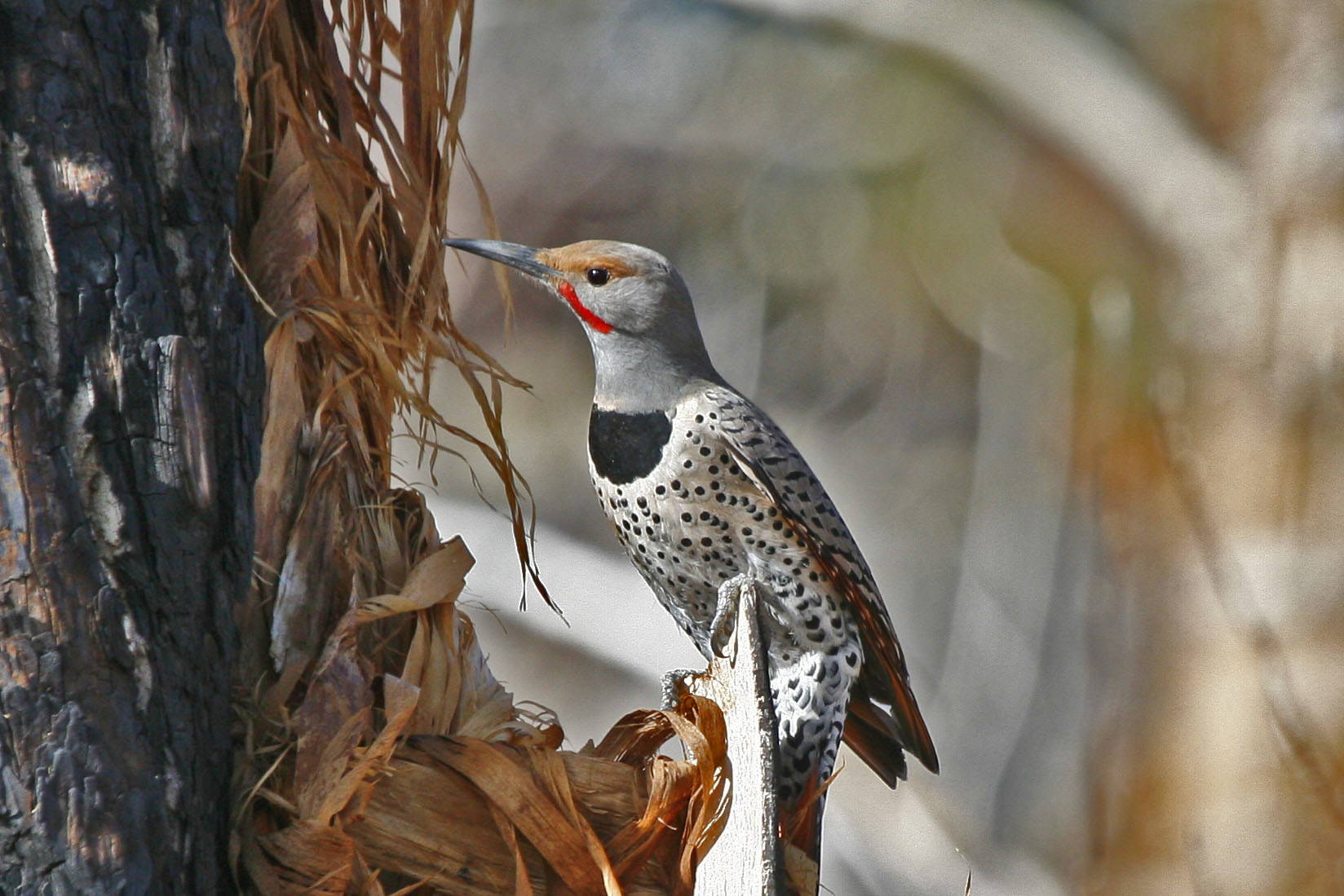
Northern flicker
Aside from planting beneficial bushes, feeding birds is controversial. According to Audubon, more than 40 percent of Americans feed wild birds, and, unfortunately, attracting too many birds to one feeder can spread parasites and other contaminants. Audubon has found that feeding wild birds generally is positive and can save some species from bad winters. Woods agrees with feeding birds, but he says keep it simple.
“They, like us, love to eat from a fine selection of healthy foods,” Woods says. “They have diets too, you know.”
Buy birdseed from a feed store or nursery rather than a grocery store, and make sure it includes safflower, sunflower seed, and millet, but not milo or sorghum seed.
Woods warns not to overfeed birds and not give them table scraps or prepared foods. Avoid feeding from flat surfaces, including the ground. Easy access can quickly draw in hordes of pigeons, house sparrows, and European starlings—species that don’t need any help and that compete with native birds.
“To invite chickadees to your yard, put out some sunflower seeds and maybe some peanuts,” Woods says. “Robins like mealworms and dried berries and seeds. Pygmy nuthatches enjoy suet, sunflower seeds, peanuts, and cracked corn. Downy and hairy woodpeckers and northern flickers will come to your yard for sunflower seeds, suet, and worms, and specific feeders can be put out for hummingbirds.”

A pine siskin, house finch, American goldfinch, and lesser goldfinch compete for food at a feeder
If you hang feeders near your home, keep them away from large picture windows. According to the American Bird Conservancy, one billion birds die each year from hitting glass windows and walls. The ABC website offers a flyer about bird-friendly windows and products available to help eliminate window collisions.
Along with food, be sure to provide water for drinking and bathing. Bird baths should be shallow to keep fledgling birds that can’t fly from drowning. Birds are attracted to the sound of running or splashing water, such as from fountains. Woods recommends putting a soaker hose up in a tree and letting it drip to attract birds such as the American robin. To attract larger birds of prey, Woods recommends burying a garbage can lid and filling it with water. He says he has seen predatory birds washing blood off their clawed feet and beaks in his pond.
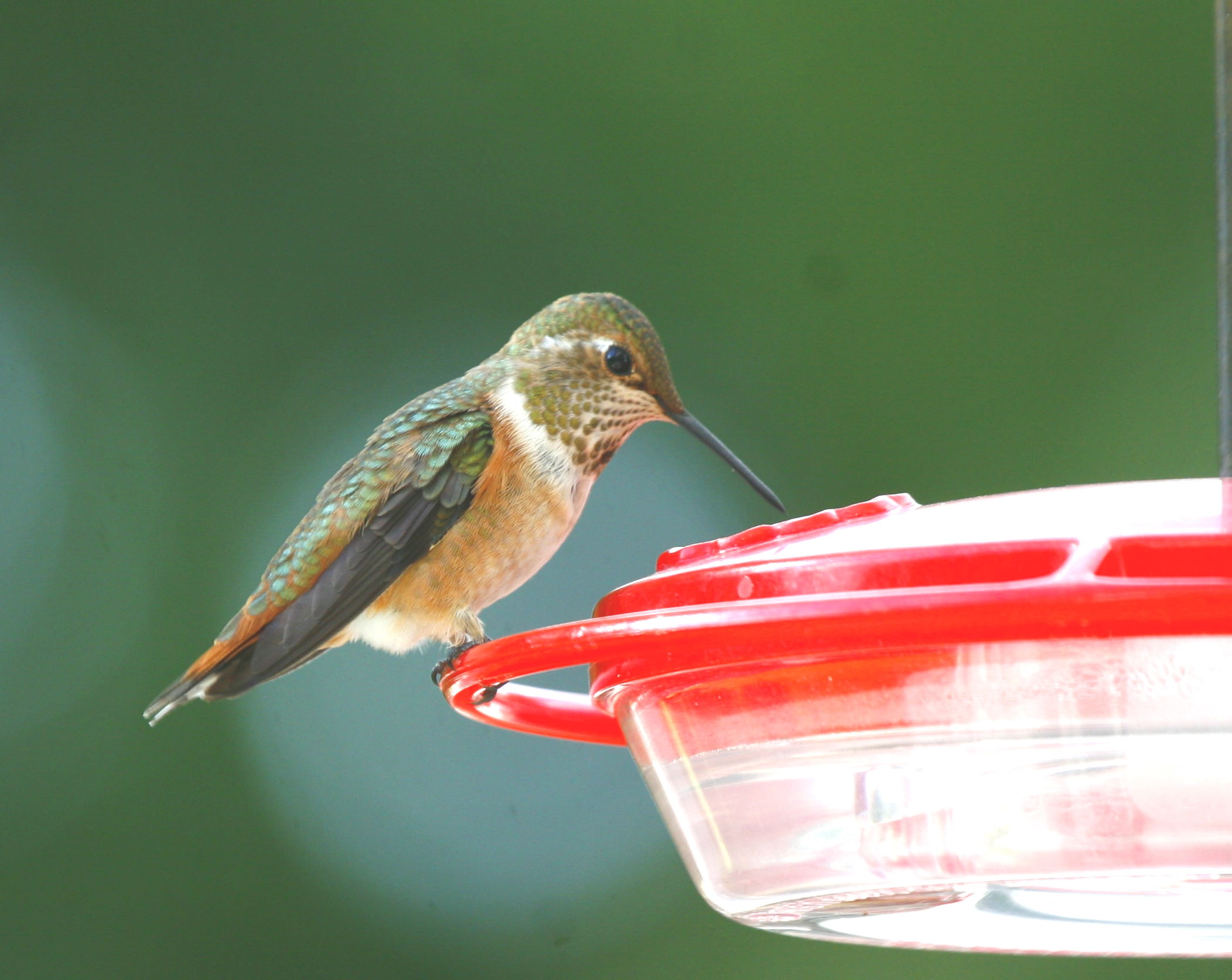
A rufous hummingbird stops at a backyard feeder
To the uninitiated and preoccupied individual, birds add an almost invisible layer to life. However, it takes only a few minutes of observation to realize that in a rather noisy world of honks, rings, and notifications, the simple song of a bird and a flutter of colored plumage is a reminder to slow down and enjoy a small part of the natural world.
Christina Nellemann is a writer and designer who is lucky to be surrounded by many species of birds at her home in Washoe Valley. Her favorite? A pair of California quail followed by their chicks.
Resources
Lahontan Audubon Society
Nevadaaudubon.org
Great Basin Bird Observatory
Gbbo.org
eBird
Ebird.org
American Bird Conservancy
Abcbirds.org/get-involved/bird-smart-glass
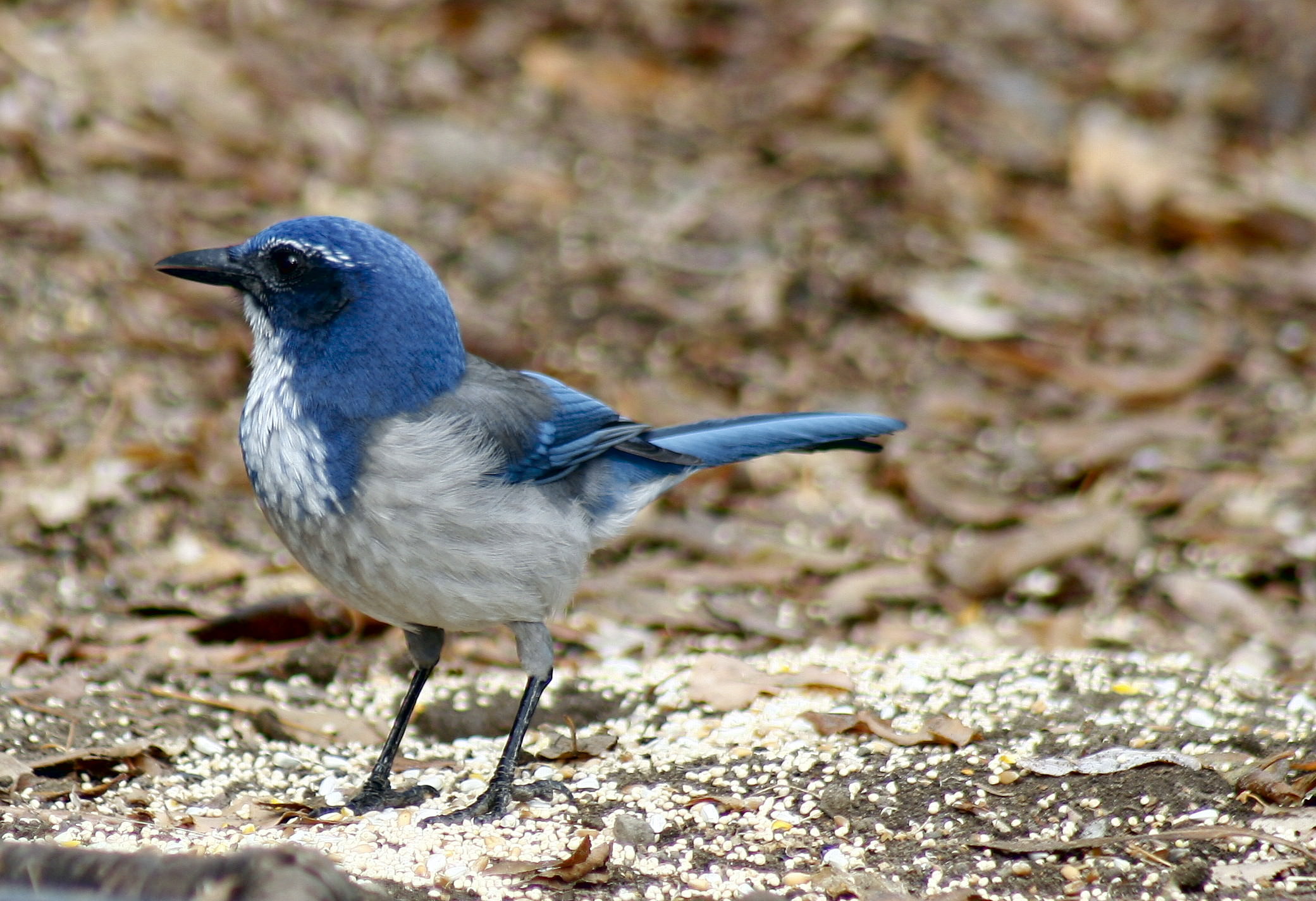
Western scrub jay
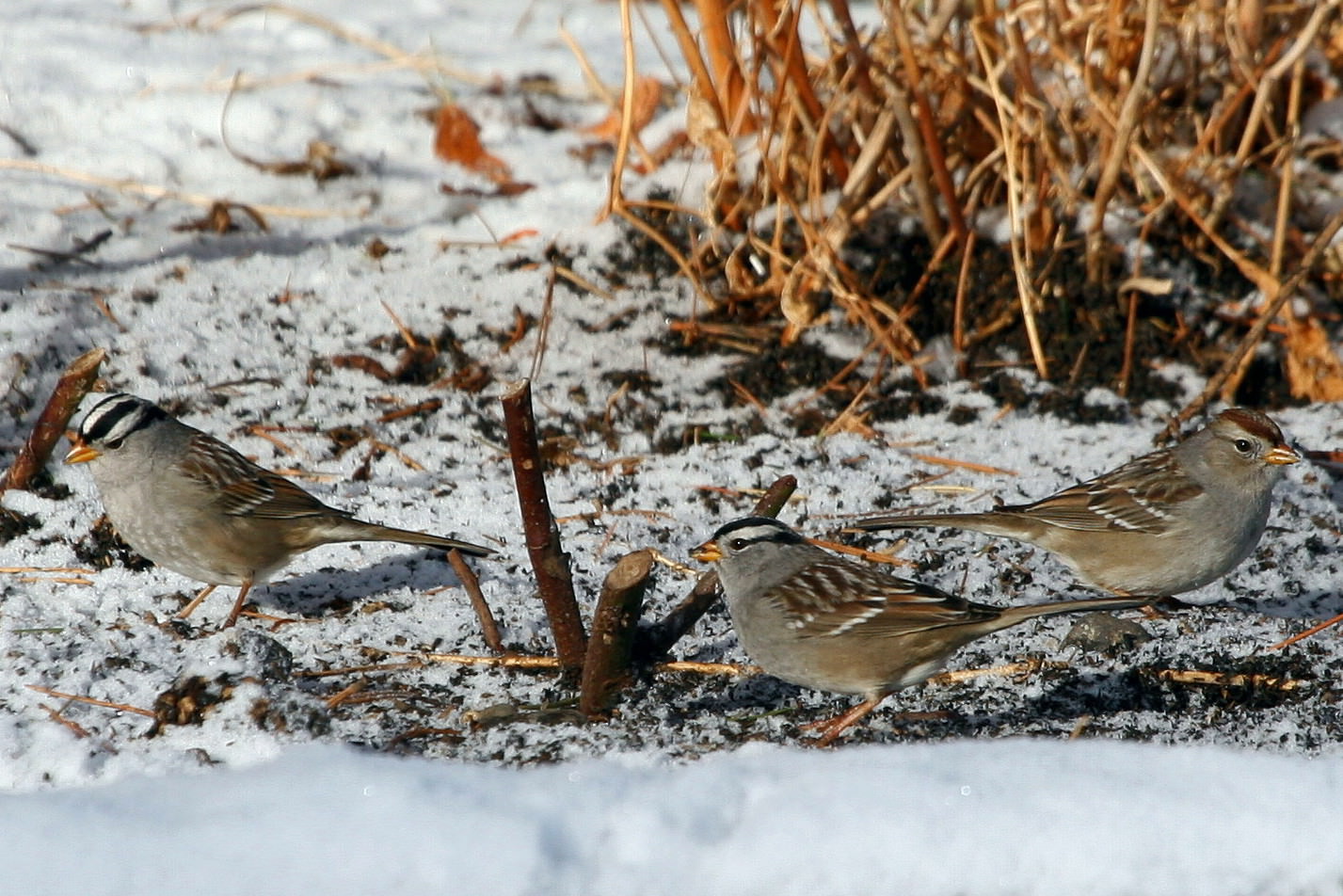
White-crowned sparrows
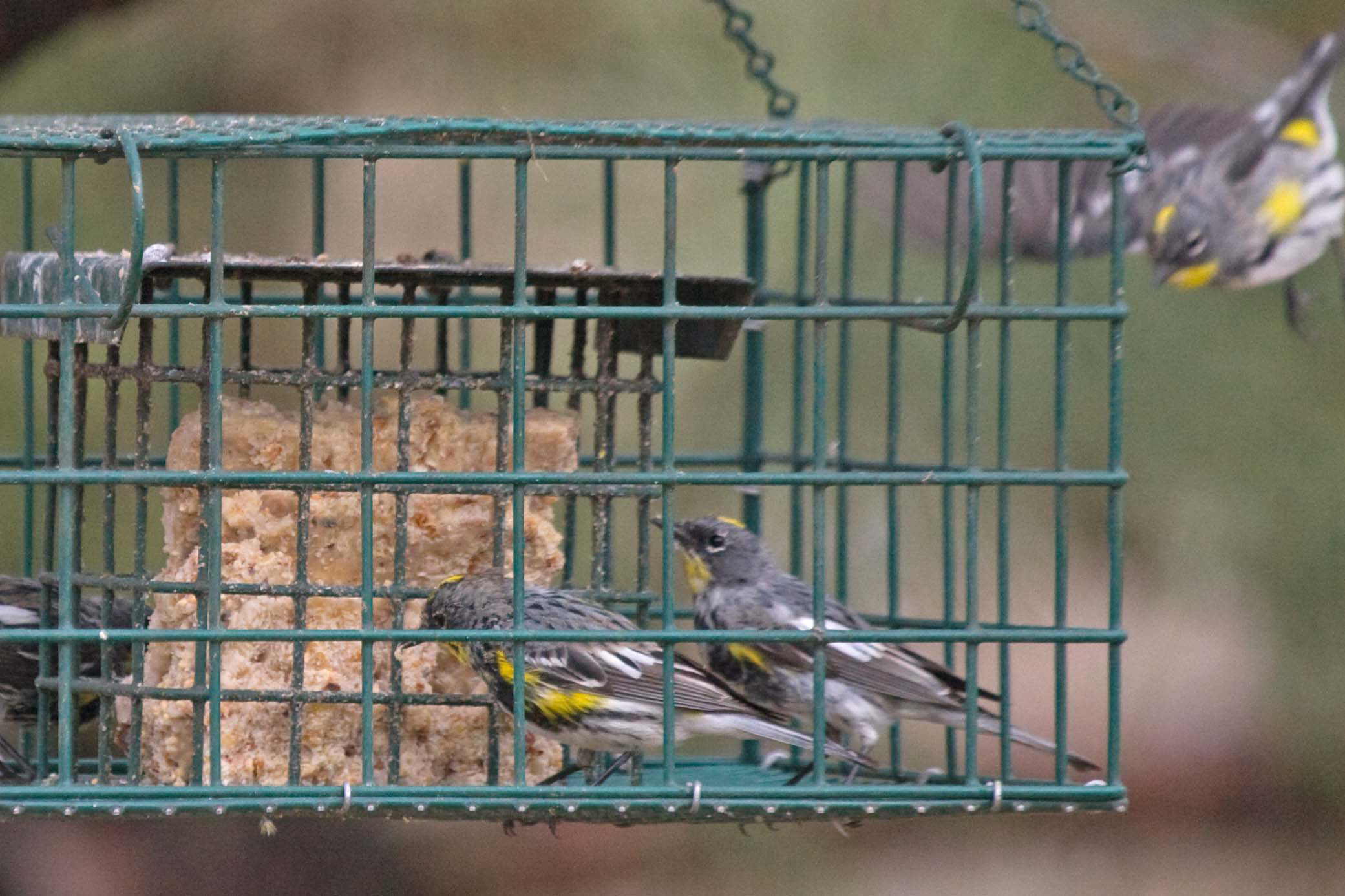
Yellow-rumped warblers in a suet feeder
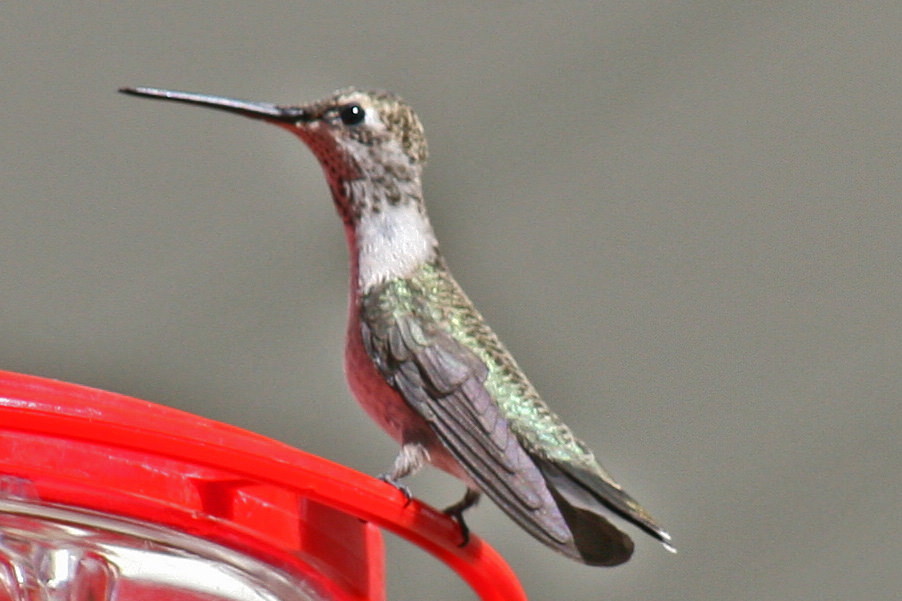
Female black-chinned hummingbird
